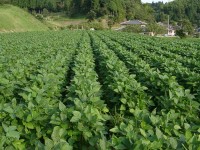Crop Diseases Could Threaten Upper Midwest Soybean Growing This Season

Rust and soybean cyst nematode could cause significant damage to crops this season
This planting season, two crop diseases could pose a danger to soybean growers in the Upper Midwest. According to a recent article about the disease threat, rust and soybean cyst nematode can do significant damage to crops, but there are proactive steps farmers can take to mitigate the adverse effects of the diseases.
North Dakota, the nation’s leading producer of dry beans and one of the top 10 states for producing soybeans, and Minnesota, the nation’s fourth largest producer of dry beans and third-leading producer of soybeans, should be on alert this growing season, the article claims. According to Sam Markell, a North Dakota State University Extension Service plant pathologist, rust will be the biggest challenge for area dry bean farmers if the summer is hot and dry. Soybean cyst nematode, on the other hand, is a “sleeper disease.” Because living parasites of the disease don’t kill the root but instead live off of it, Markell says “the plants will look good, they’ll be green. [Growers won’t] see a lot of damage until [they’re] taking a 15 percent or 30 percent yield loss.”
With soybean planted area for 2013 expected to hit 77.1 million acres, growers can address the threats by proactively managing the diseases’ potential effects on crops. Markell says crop rotation and chemical application can reduce rust’s threat to dry beans. In the case of soybean cyst nematode, growers should keep their eyes out for small, yellow patches on soybeans in late July or August and, if they’re spotted, take soil samples for testing. “The good thing is,” Markell says, “we can manage it. The key is to find it early.”
According to the article, potentially late planting of dry beans and soybeans this season should not significantly affect the likelihood of the diseases occurring. Instead, weather and field conditions at specific times in crops’ maturation will have the biggest impact on how common the diseases are.